Clipping Chicken Wings-How And Why You Should
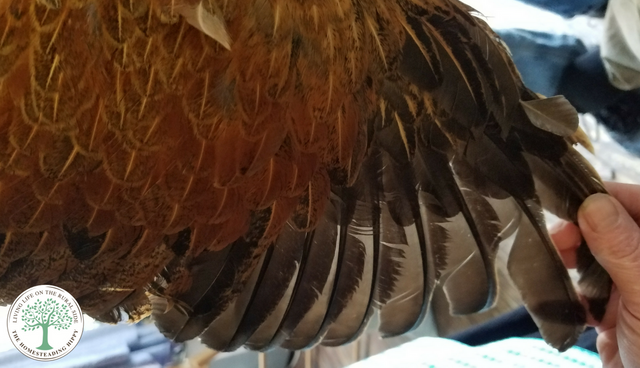
Have flighty birds that escape their pens? Learn how safely clipping chicken wings can help decrease this problem.
Having a backyard flock of chickens means you get fresh eggs. They require little care; only freshwater, good food, a safe place to roost and to lay eggs. Unfortunately for most chicken owners, keeping chickens were they belong isn't always easy. Chickens are not always up on the rules of the fence or other borders, and are naturally curious animals. Flying over the fence can seem like a good idea to them.
When chickens have all their feathers, they can actually take flight. Well, in a manner of speaking. They are able to fly enough that their flight lasts about 13 feet, up to 6 feet off the ground. It’s not very far, but it’s enough to get over a 6 foot fence and into the garden, or a neighbor’s yard. This can cause very unwanted damage.

One way you can help this is by clipping chicken wings on one side. Chicken wings have different feathers, from primary to secondary. Chickens with clipped wings on one side are unable to balance properly to get off the ground.
This will not hurt them. As a matter of fact, it’s similar to when you trim your hair. Unless you go too far down the wing, there will be no pain or loss of blood, even for a fully grown hen.
You can begin clipping chicken's wings at anytime, but it's usually best to do it before they become a problem. This means that it would be best to clip a non flying pullet (under 6 months of age) before she begins to try and fly over that fence. They will adapt faster the younger they are. This is much like an adult who loses a limb and has to go on with daily life over a child who loses it earlier in life. The adult has more to "muscle memory" to overcome and adapt than the child will have.
Before you resort to clipping the flock's wings, consider the breed. More heavier breeds, like Jersey Giants, or Buff Orpingtons may not need their wings clipped at all. They would be too heavy to get off the ground and over that fence. Smaller breeds, like Leghorns or bantam breeds that are much lighter in weight will be your ideal candidates. Any who repeatedly escape, regardless of the breed will also be a likely candidate for clipping.
So, how do you go about safely clipping chicken wings?
First, you want to gather your materials needed:
- sharp scissors
- Towel (to help hold the bird securely)
- Gauze pad (for helping stopping bleeding if necessary)
- Cornstarch (also helps stop bleeding)
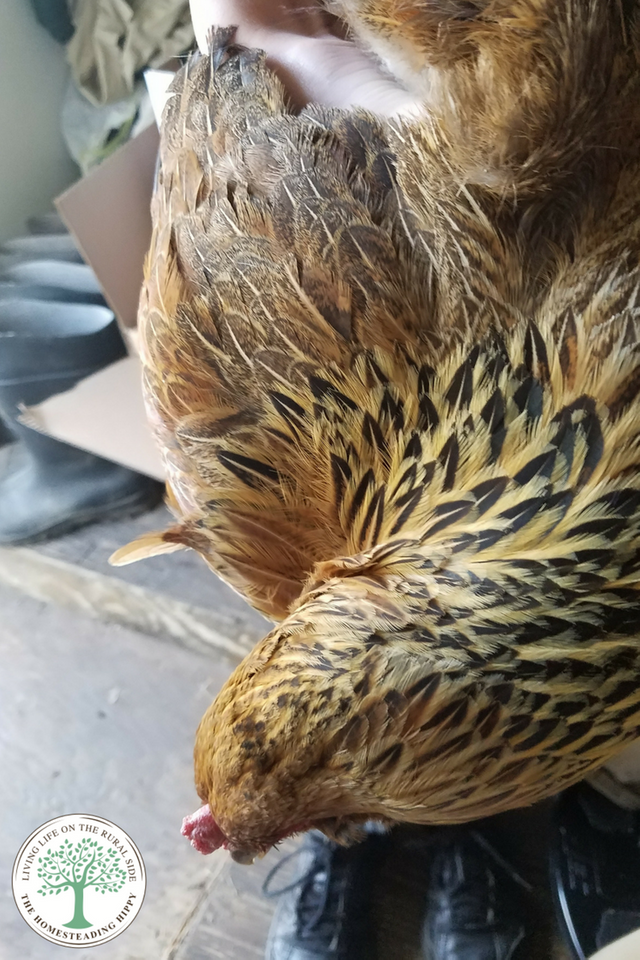
Now, you will want to catch your chicken.
Once you have your bird, gently invert it for a moment to help calm it down. Hold it securely under your arm, keeping the feet and beaks away from you. Sometimes, carefully wrapping them in an old towel can keep you from getting scratched. This may also keep the bird more calm while you are clipping.Expose the feathers on one wing.
We choose the right side of all our birds so that we can easily identify which bird has already been done. Either side of the bird is fine, just choose one side or the other for your flock. Gently pull the wing out and extended it to identify the primary feathers. Make sure to clip the wings only. You do not want to cut into any bone or blood vessel. Take your time doing this to avoid injury on the bird. Clip the feathers, one at a time, down the entire wing until all the flight feathers are clipped. You will be cutting approximately 10 primary flight feathers. At first, it may seem daunting, but will practice, you will be much more secure in this.You do not want to clip both wings on the same bird. This will keep their weight even distributed, and they may still be able to fly, even a bit. Of course, this is under scrutiny as not all chicken owners feel this way. But, for us, this has helped keep our birds safely out of the neighbor’s yard, and away from stray animals.
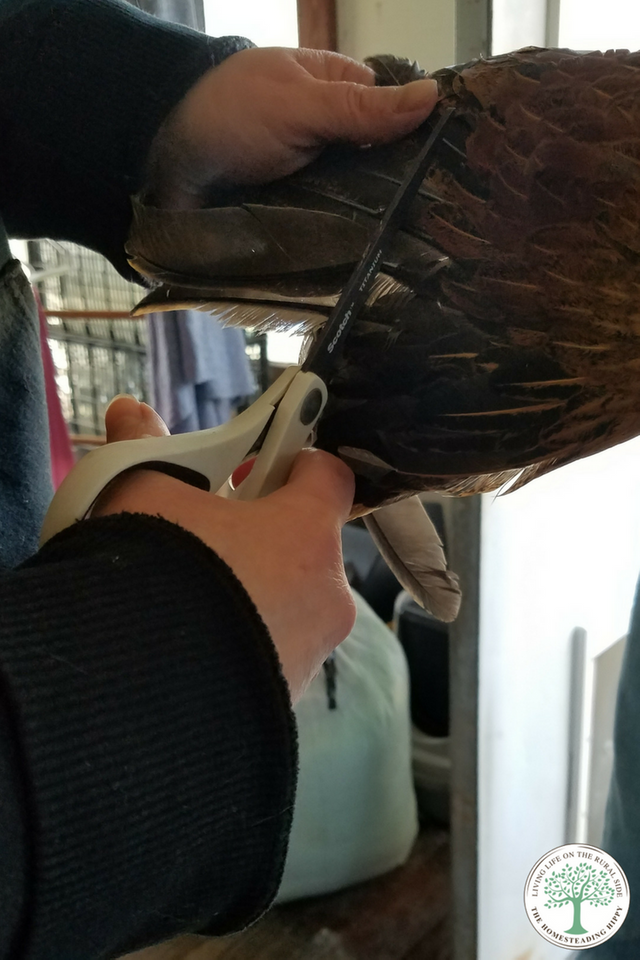
Next, carefully clip the wings with the sharp scissors.
Only clip the primary flight feathers, down to where the secondary feathers start. Hold the bird a moment to calm down, then gently release back into the pen.
Continue with all the birds, keeping the same side clipped as you go. This will only last until their next molt, at which time the feathers grow back. Most chickens at that time will not try and fly again and give up. However, if you have a particularly stubborn hen, you may need to repeat this process each time to keep them safe.
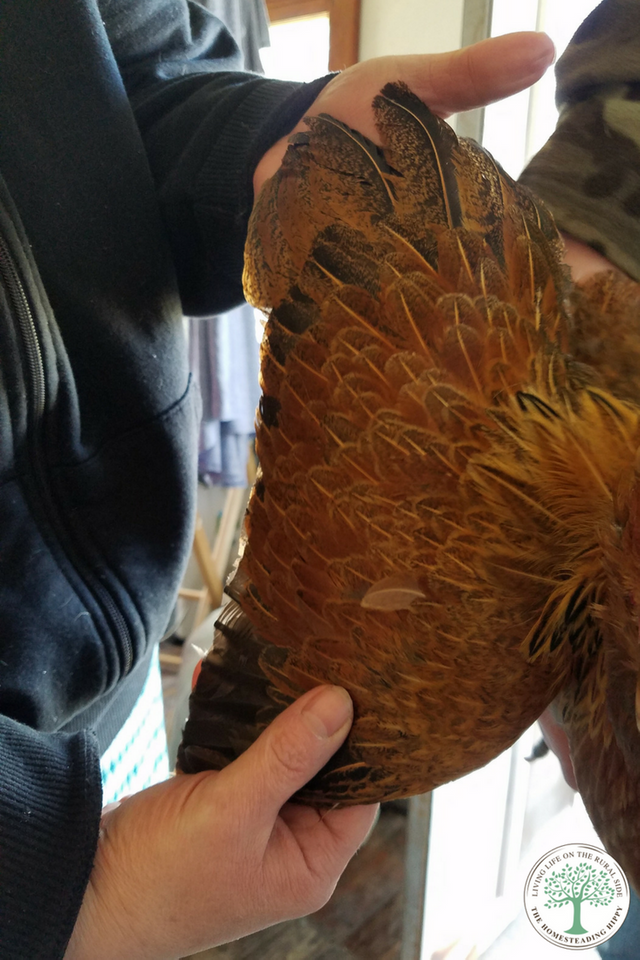
If you should happen to accidentally go too far on the chicken’s wing feathers and draw blood, sprinkle a bit of cornstarch on the cut and apply gentle pressure to stop the bleeding.
Another option to help stop bleeding is to apply yarrow on the bird’s wing area. Use yarrow either fresh from the garden, or dried in a poultice on the gauze pad. Don’t worry about excessive blood supply loss if you clip just a little bit. Stop the bleeding as quickly as you can, and keep an eye on the bird for a couple hours to make sure they are okay. Watch for signs of lethargy, or not eating. More often than not, the bird will be just fine.
Clipping feathers on your flock may seem cruel to some, but free range chickens CAN and do get into a lot of trouble. This will help keep them safer in their designated area.
Do you practice clipping chicken wings? Why or why not? Be sure to share in the comments what you do!
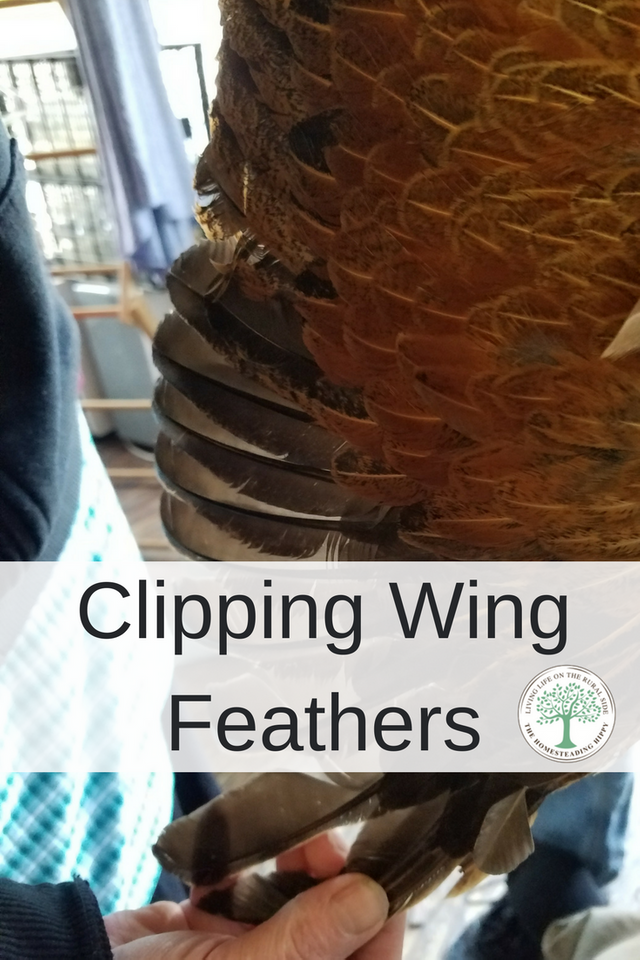
Posted from my blog with SteemPress : http://thehomesteadinghippy.com/clipping-chicken-wings/
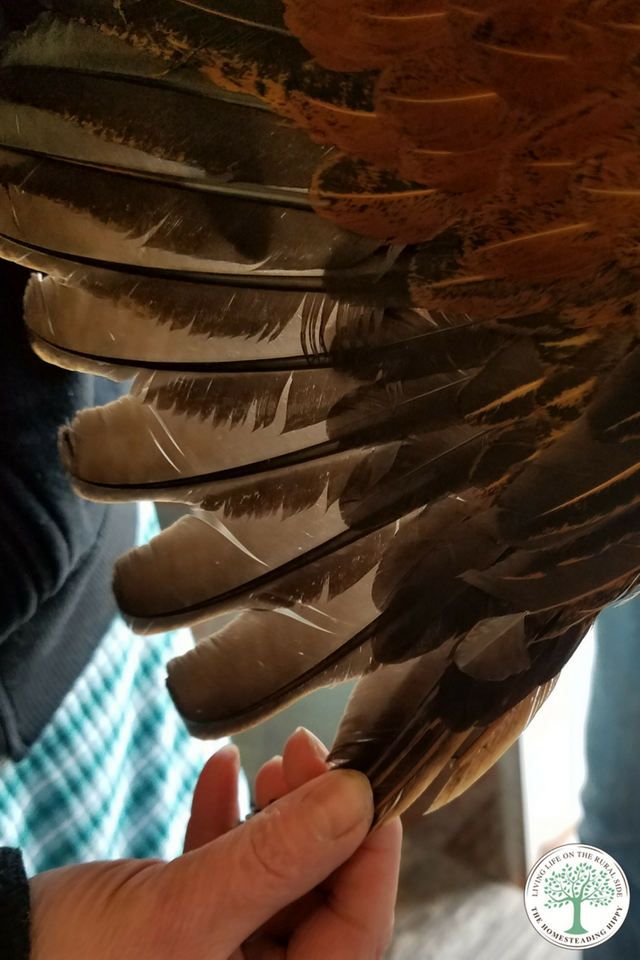
Nice tutorial for how to do this! I agree, starting it young stops a lot of problems in the bud. If they never get over the fence, they don't want to as bad, and don't try very hard to get over, if at all.
From my own personal experience, I have had to clip both sides. I have heard that one side puts them off balance and stops them from flying, but this has not worked well for me. I have to trim both wings. Usually, just clipping the primaries works well, but if you have lighter breeds, like game chickens, you will have to do both primaries AND secondaries to keep them grounded.
Like you said, this does not hurt them at all. Might leave them looking a little stumpy from clipping off all the wing feathers, but if they need them all off, they probably deserve to look stumpy, haha!
We did both sides and our dumb chickens still flew. I'm starting to think I was too conservative in my clipping and I need to clip off more than I did. I'm so glad to have you guys as such a great resource!
I think some chickens are just more inclined to fly than others, especially if they are used to flying around and getting into trouble. I find these hens need their wings cut REALLY short. After a while, they get used to not flying, and in the future, you dont have to cut them as short anymore.
That's good to know. We're going to start the bantams young after reading this article and others' experiences.
Yep. Its best to start young, I think. Especially if you have lightweight birds that can fly better anyway,like game chickens or bantams. :D
Very informative article. My wife and I were considering getting chicken for their eggs. Not sure it would 'fly' with the HOA though. But we're still doing research into it.
The best part of that is that the laws are changing all over and many HOA's are becoming more and more accepting to chickens!
Good luck with this!
Thank you for sharing your knowledge! This post has been added to our growing directory of Steemit "how to" posts for the Homesteading/Survival/Foraging/Prepper communities. Your post is helping people learn to survive and thrive now and in the future!
Thank you so much for sharing this! We were just discussing clipping our bantams' wings and I was wondering how to go about it safely. Last time we clipped wings we stupidly did both sides and the chickens still flew over the fence with no problem. This time we will just do one side. Thanks again!